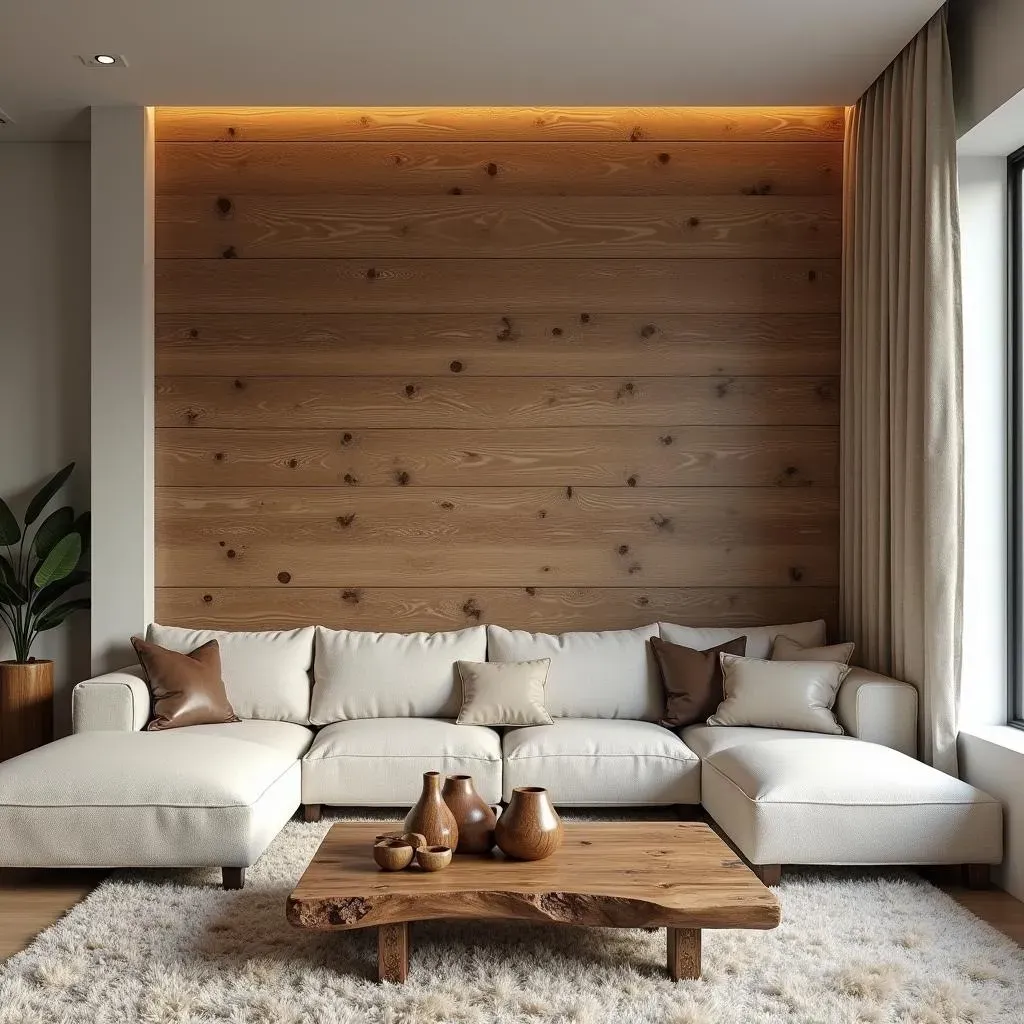Table of Contents
Tired of staring at the same blank walls? Want to inject some warmth, texture, and personality into your living space? Look no further than the timeless appeal of a wood accent wall design ideas. More than just a decorative feature, a wood accent wall can transform any room, creating a focal point that draws the eye and adds a touch of natural elegance. But where do you start? With countless wood types, patterns, and design styles to choose from, the possibilities can seem overwhelming.
Why Choose a Wood Accent Wall? Design Ideas & Benefits

Why Choose a Wood Accent Wall? Design Ideas & Benefits
Instant Character and Warmth
Let's face it, plain walls can be boring. They lack depth and personality. A wood accent wall instantly changes that. It's like adding a soul to your space. The natural grain and texture of the wood bring warmth and character that paint simply can't replicate.
Think about walking into a room and immediately feeling a sense of coziness and relaxation. A wood accent wall achieves this by creating a focal point that draws you in and makes you feel at home. It's a simple yet effective way to transform a sterile environment into a welcoming sanctuary.
Versatility in Design and Style
One of the best things about wood accent walls is their versatility. Whether your style is rustic farmhouse, modern minimalist, or something in between, there's a wood accent wall design that will perfectly complement your aesthetic. From reclaimed wood planks to sleek, geometric patterns, the possibilities are endless.
Beyond aesthetics, wood accent walls can also be functional. They can help to insulate a room, reduce noise, and even conceal imperfections in the existing wall. Plus, they're a great way to add a touch of nature to your indoor environment, creating a calming and restorative atmosphere.
Creative Wood Accent Wall Design Ideas for Every Room
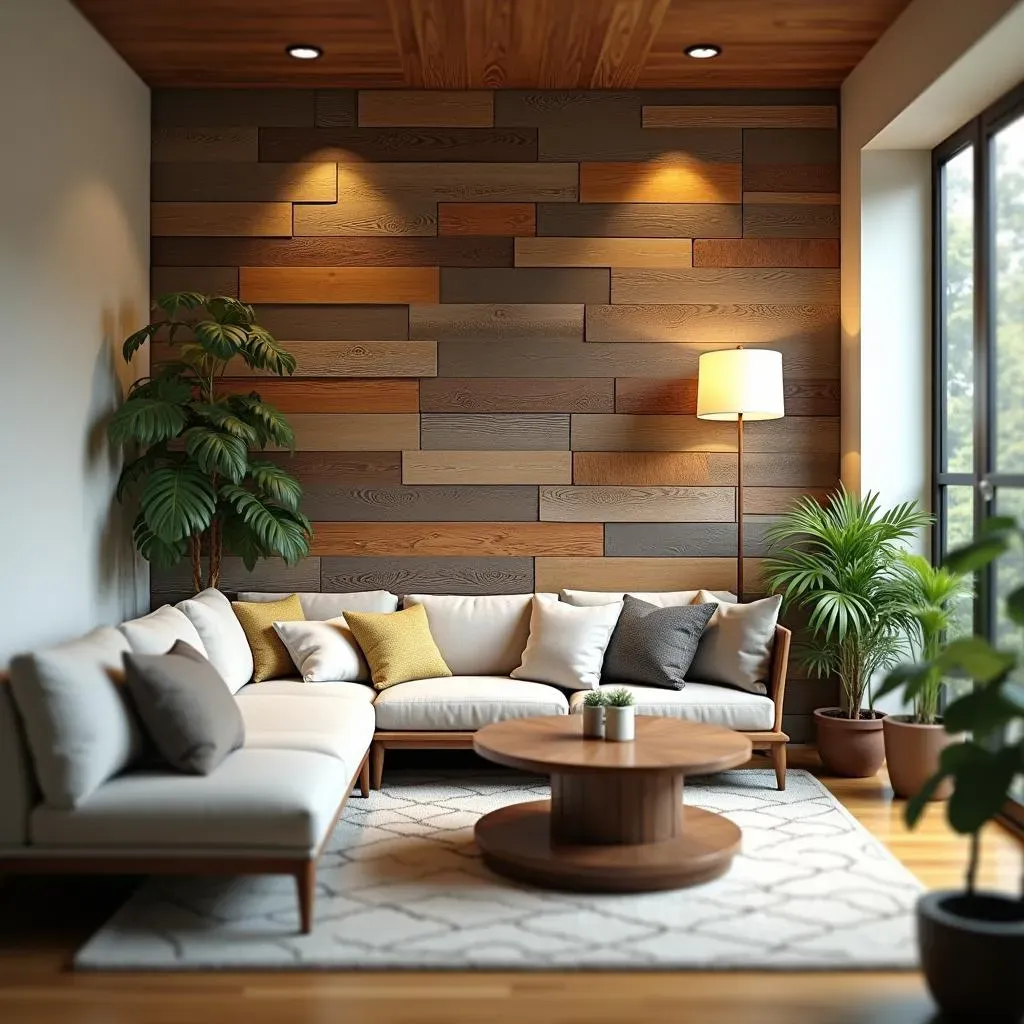
Creative Wood Accent Wall Design Ideas for Every Room
Bedroom Bliss: Rustic Charm and Relaxing Retreats
Transform your bedroom into a cozy sanctuary with a wood accent wall that exudes rustic charm. Consider using reclaimed wood planks in varying widths and tones to create a textured and visually interesting backdrop for your bed. The natural imperfections and weathered appearance of the wood will add character and warmth, making your bedroom feel like a relaxing retreat. To enhance the ambiance, incorporate soft lighting, plush bedding, and natural elements like plants and woven rugs.
For a more modern take on the rustic theme, opt for a geometric pattern using stained wood panels. This will add a touch of sophistication while still maintaining the warmth and texture of the wood. Remember to choose a stain color that complements your existing décor and creates a cohesive look. You can also experiment with different wood types, such as cedar or pine, to achieve a unique and personalized aesthetic.
Living Room Luxe: Statement Walls and Stylish Accents
Make a bold statement in your living room with a wood accent wall that showcases your personal style. Consider using a herringbone pattern with dark-stained wood to create a sophisticated and eye-catching feature wall. This classic pattern adds a touch of elegance and visual interest, making your living room feel more luxurious and refined. Pair it with modern furniture, metallic accents, and pops of color to create a balanced and stylish space.
If you prefer a more contemporary look, opt for a vertical wood slat wall with clean lines and a minimalist design. This will create a sense of height and spaciousness, making your living room feel larger and more open. Choose a light-colored wood, such as birch or maple, to brighten the space and create a calming atmosphere. You can also add a touch of greenery by incorporating potted plants or hanging planters along the wood slat wall.
Room | Design Idea | Wood Type |
|---|---|---|
Bedroom | Reclaimed Wood Planks | Pine, Cedar |
Living Room | Herringbone Pattern | Dark-Stained Oak |
Bathroom | Vertical Wood Slat Wall | Teak, Cedar |
DIY Wood Accent Wall: Design, Planning, and Installation Tips
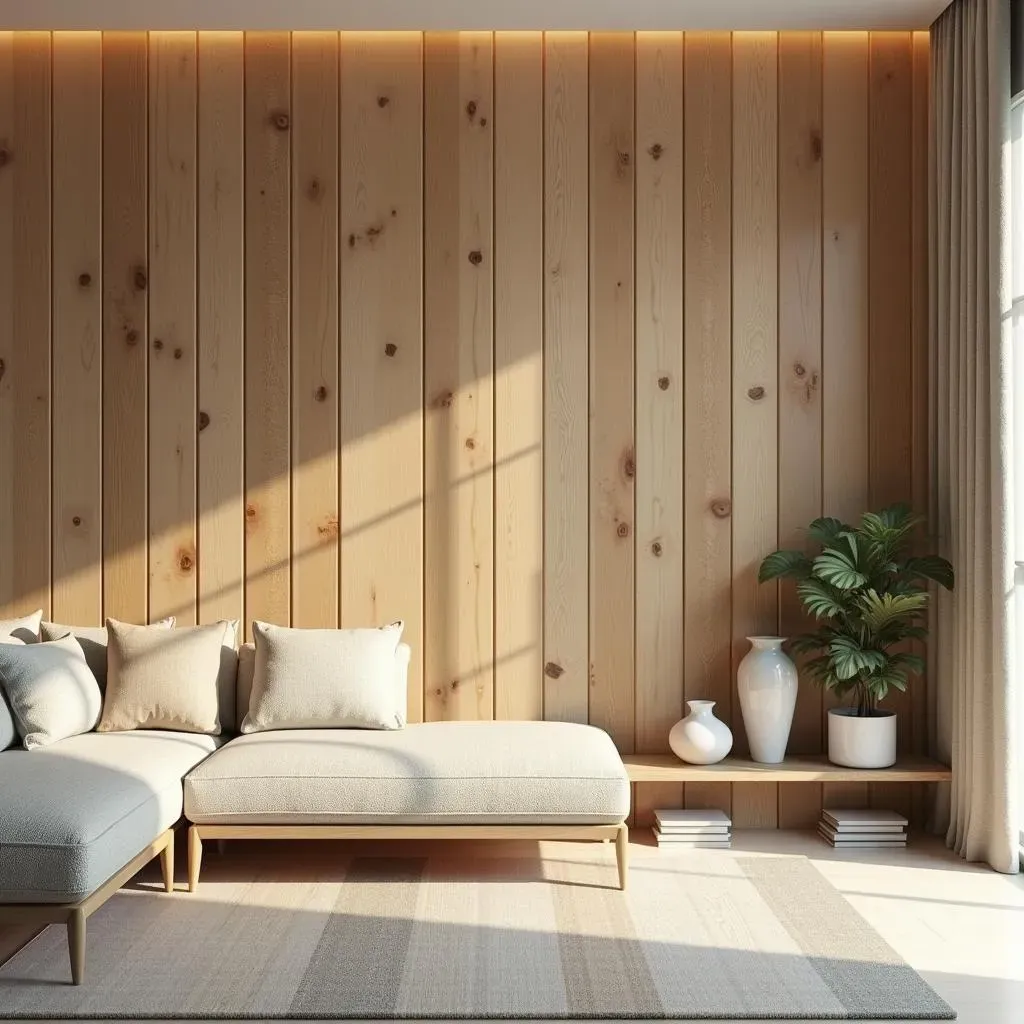
DIY Wood Accent Wall: Design, Planning, and Installation Tips
Design Decisions: From Concept to Blueprint
Alright, so you're thinking about tackling a DIY wood accent wall? Awesome! First things first, let's nail down the design. This is where the fun begins, but it's also where you need to be the most organized. Start by sketching out your vision. What kind of wood are you thinking? What pattern? How big will the wall be? Consider the existing style of your room and choose a design that complements it. Don't be afraid to get inspiration from magazines, Pinterest, or even your favorite coffee shop!
Once you have a general idea, it's time to get more specific. Measure your wall accurately and create a detailed blueprint. This will help you determine how much wood you'll need and how to cut it. Think about the details: Will you be using nails, screws, or adhesive? Will you need any special tools? The more you plan upfront, the smoother the installation process will be.
Material Matters: Choosing the Right Wood
The type of wood you choose will have a huge impact on the look and feel of your accent wall. Reclaimed wood offers a rustic, vintage vibe, while smooth, finished planks create a more modern aesthetic. Consider the color, grain, and texture of the wood, and how it will interact with the light in your room. Think about cost too, because some types of wood are more expensive than others.
Don't forget to factor in the workability of the wood. Softer woods like pine are easier to cut and nail, while hardwoods like oak are more durable but require more effort. If you're a beginner, it might be best to start with a softer wood. And always, always, wear safety glasses and a dust mask when working with wood!
Installation Insights: A Step-by-Step Guide
you've got your design, your materials, and your safety gear. Time to get your hands dirty! Start by prepping the wall. Clean it thoroughly and make sure it's smooth and even. If you're using adhesive, apply it according to the manufacturer's instructions. If you're using nails or screws, use a stud finder to locate the studs and attach the wood securely.
Work methodically, one plank at a time. Use a level to ensure that each piece is straight and aligned. If you're creating a pattern, take your time and double-check your measurements. Don't be afraid to ask for help if you need it! Once all the wood is installed, fill any nail holes or gaps with wood filler and sand smooth. Finally, apply a sealant or finish to protect the wood and enhance its natural beauty. Stand back and admire your handiwork – you just created a stunning DIY wood accent wall!
Step | Action | Tips |
|---|---|---|
1 | Design & Plan | Sketch, measure, create a blueprint |
2 | Gather Materials | Choose wood, adhesive/nails, tools |
3 | Prep the Wall | Clean, smooth, locate studs |
4 | Install Wood | Level, align, secure |
5 | Finishing Touches | Fill holes, sand, seal/finish |
Exploring Different Types of Wood for Your Accent Wall Design
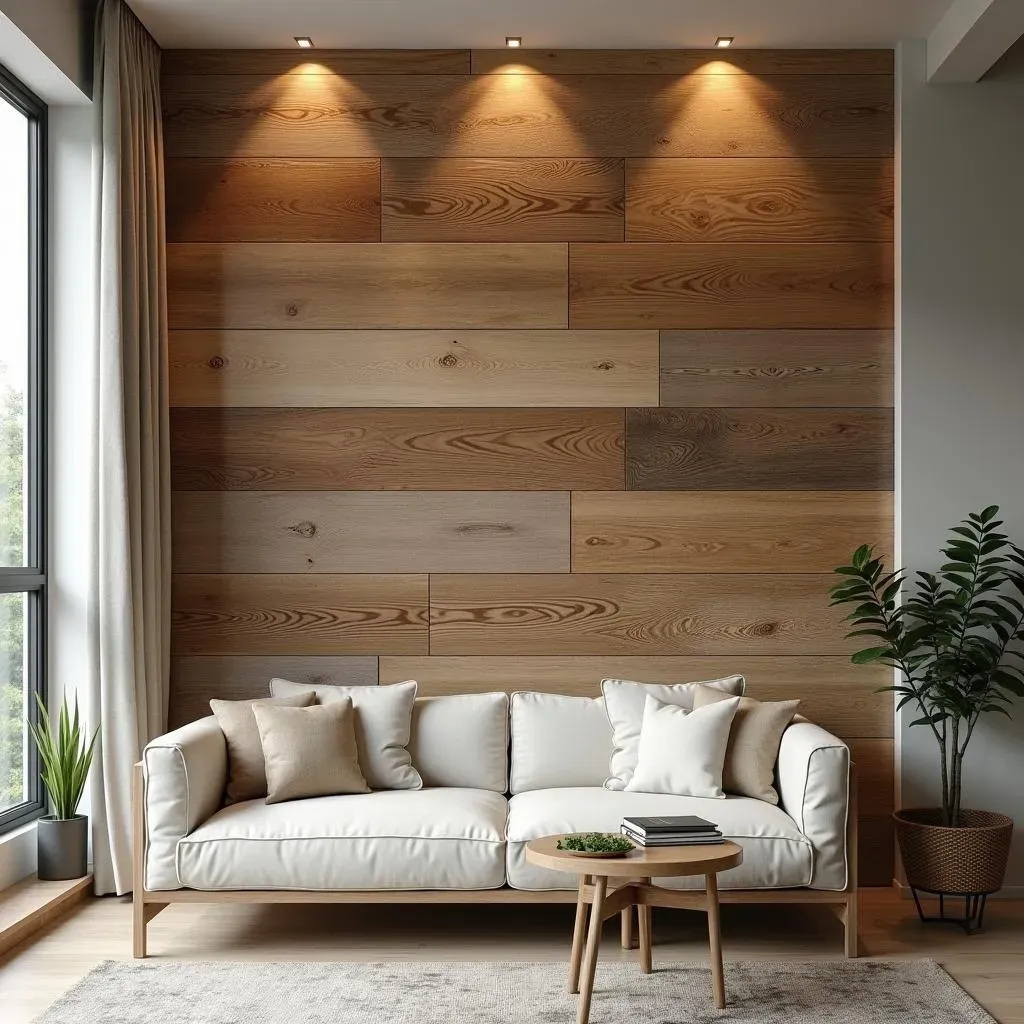
Exploring Different Types of Wood for Your Accent Wall Design
Softwoods vs. Hardwoods: Understanding the Basics
When diving into the world of wood accent walls, it's essential to grasp the fundamental difference between softwoods and hardwoods. Softwoods, like pine, cedar, and fir, are typically more affordable and easier to work with. They're a great choice for DIYers on a budget or those new to woodworking. However, they tend to be less durable and more prone to scratches and dents.
Hardwoods, on the other hand, such as oak, maple, and walnut, are known for their strength, durability, and rich grain patterns. They add a touch of luxury and sophistication to any space, but they also come with a higher price tag and require more skill to install. The choice between softwood and hardwood ultimately depends on your budget, aesthetic preferences, and the level of wear and tear the wall will endure.
Popular Wood Choices and Their Unique Characteristics
Let's explore some specific wood types that are commonly used for accent walls. Pine is a versatile and affordable option with a light color and subtle grain. It's easy to stain or paint, making it a great choice for customizable designs. Cedar is naturally rot-resistant and has a distinctive aroma, making it ideal for bathrooms or other humid environments. Oak is a classic hardwood known for its strength and beautiful grain patterns. It adds a timeless elegance to any room.
Reclaimed wood is a sustainable and stylish option that adds character and history to your space. It comes in a variety of species and finishes, each with its own unique story to tell. Walnut is a luxurious hardwood with a rich, dark color and striking grain patterns. It's perfect for creating a dramatic and sophisticated accent wall. Consider the specific characteristics of each wood type and how they align with your design goals and budget.
Wood Type | Characteristics | Best Use |
|---|---|---|
Pine | Affordable, easy to stain, light color | Versatile designs, DIY projects |
Cedar | Rot-resistant, aromatic | Bathrooms, humid environments |
Oak | Strong, beautiful grain patterns | Classic, elegant designs |
Reclaimed Wood | Sustainable, unique character | Rustic, vintage aesthetics |
Walnut | Luxurious, dark color, striking grain | Dramatic, sophisticated accents |
Styling Your Space: Complementing Your Wood Accent Wall Design
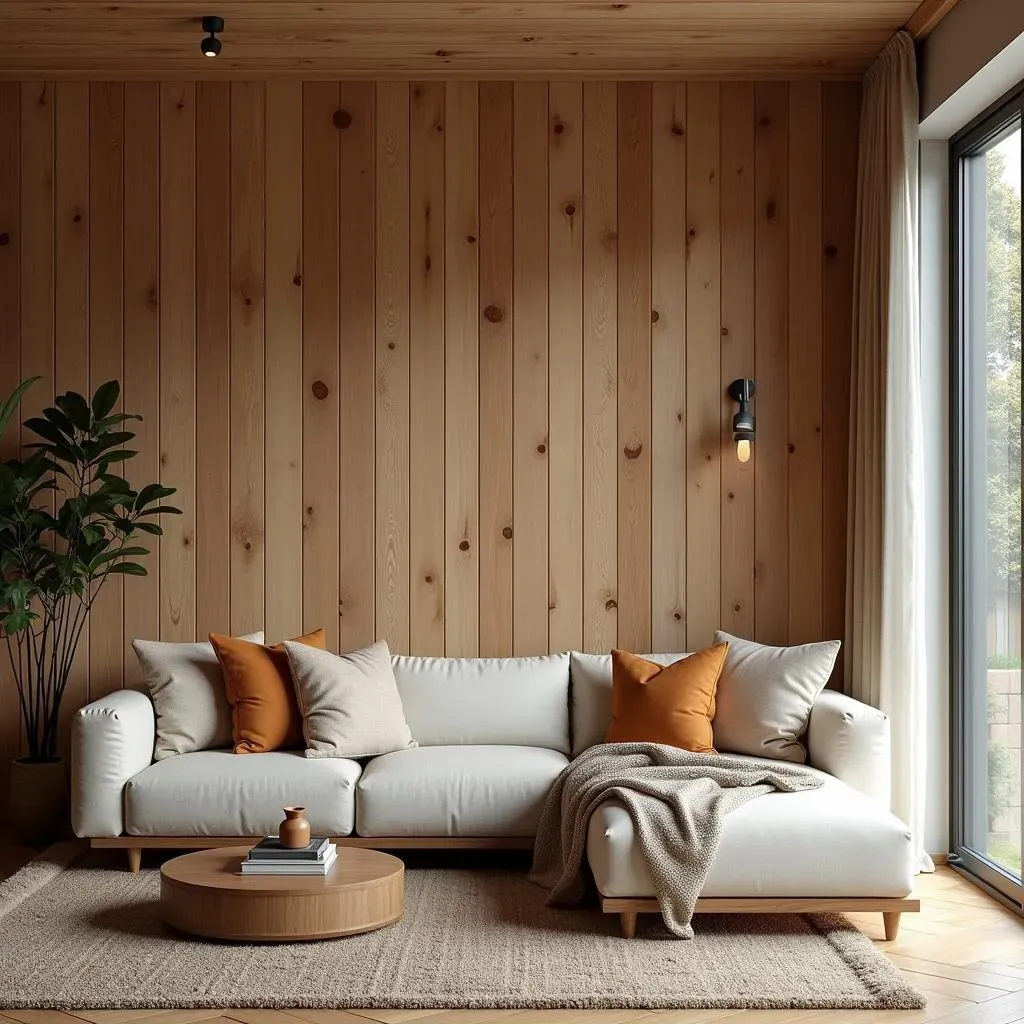
Styling Your Space: Complementing Your Wood Accent Wall Design
Color Harmony: Choosing the Right Palette
you've got this amazing wood accent wall, now what? Color is key! Think about the undertones of your wood. Is it warm with reddish hues, or cool with grayish tones? Choose paint colors, furniture, and accessories that complement those undertones. For warm woods, consider earthy tones like olive green, terracotta, or mustard yellow. For cool woods, opt for shades of gray, blue, or lavender. Contrast can be good, but make sure it's intentional and balanced. A bright white sofa against a dark walnut wall can look stunning, but too many clashing colors can create a chaotic and overwhelming effect.
Don't be afraid to use a color wheel to help you find complementary colors. Analogous colors (those that are next to each other on the color wheel) create a harmonious and calming effect, while complementary colors (those that are opposite each other) create a more vibrant and energetic feel. Consider the overall mood you want to create in the space and choose your color palette accordingly. And remember, less is often more. A few well-chosen colors can be more effective than a rainbow of hues.
Texture and Textiles: Adding Depth and Interest
Beyond color, texture and textiles play a crucial role in complementing your wood accent wall. Think about layering different textures to create depth and visual interest. A plush velvet sofa, a chunky knit throw, and a woven rug can all add warmth and comfort to the space. Contrast smooth surfaces with rough ones, and soft textures with hard ones. For example, a sleek glass coffee table can look stunning against a rustic wood wall, while a cozy sheepskin rug can soften the look of a more modern design.
Don't be afraid to mix and match different patterns and prints, but make sure they complement each other in terms of color and scale. A large-scale geometric print can look great against a simple wood wall, while a smaller, more intricate pattern can add a touch of whimsy. Consider the scale of your furniture and accessories as well. A large, oversized sofa can overwhelm a small space, while a tiny accent chair can get lost in a larger room. Experiment with different combinations until you find what works best for your space. And most importantly, have fun with it! Your home should be a reflection of your personal style, so don't be afraid to take risks and express yourself.
Element | Tips for Complementing Wood Walls |
|---|---|
Color Palette | Match undertones, use color wheel, keep it balanced |
Textures | Layer different textures, contrast smooth & rough |
Textiles | Mix patterns carefully, consider scale |
Lighting | Use warm lighting, highlight wood texture |
Accessories | Keep it minimal, choose meaningful pieces |
Conclusion: Elevate Your Space with Wood Accent Wall Design Ideas
From rustic charm to modern sophistication, wood accent walls offer a versatile way to enhance any interior. By exploring different design concepts, wood types, and DIY techniques, you can create a personalized statement that reflects your unique style. A wood accent wall isn't just a design choice; it's an investment in the warmth, character, and overall ambiance of your home. So, embrace the natural beauty of wood and transform your space into a haven of style and comfort.
